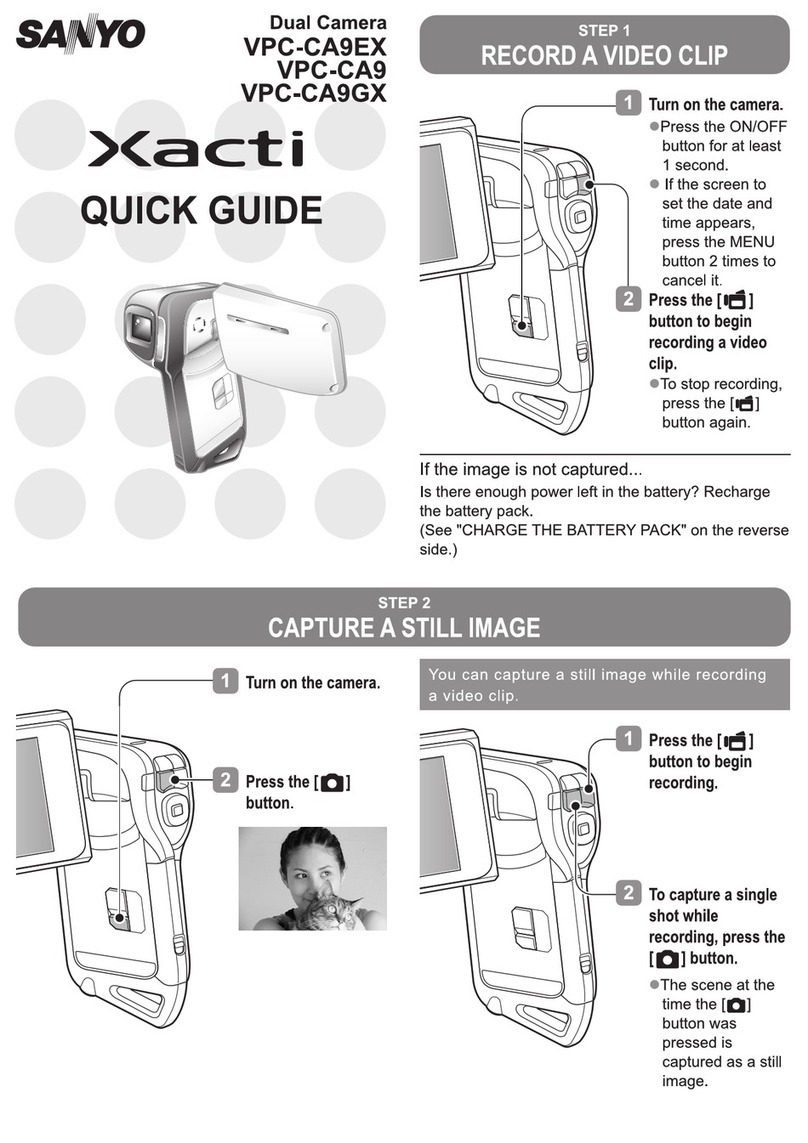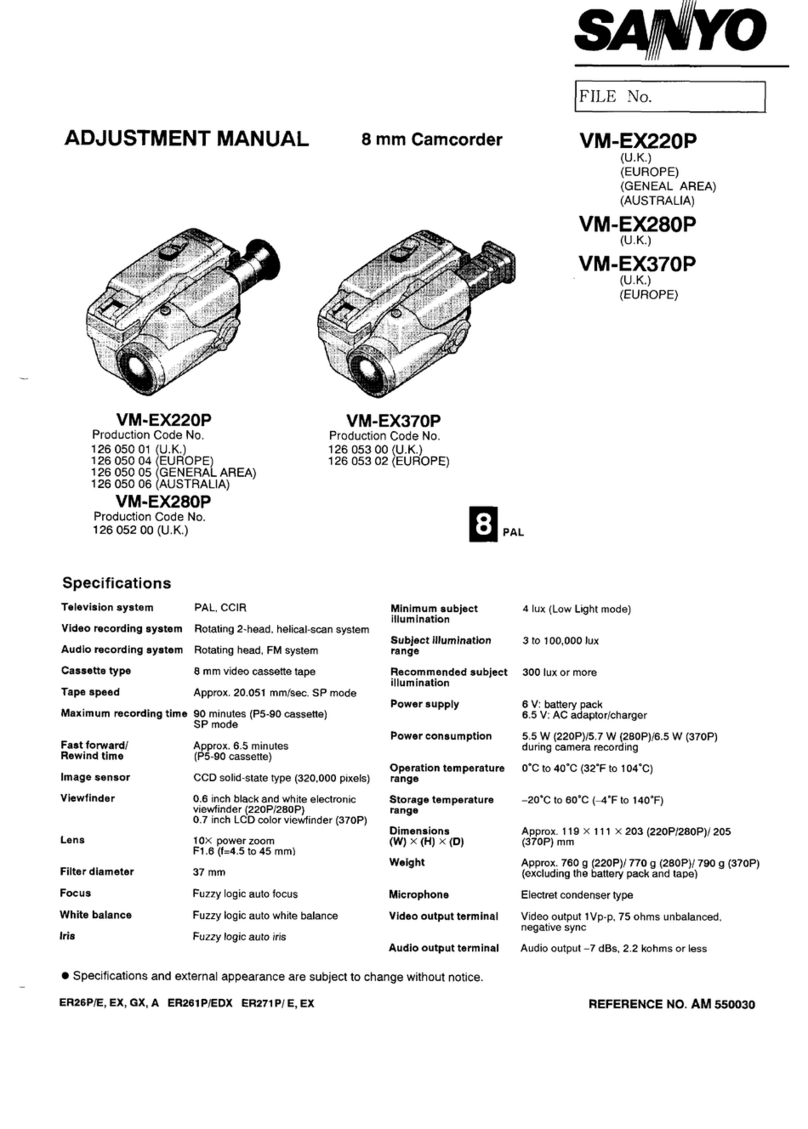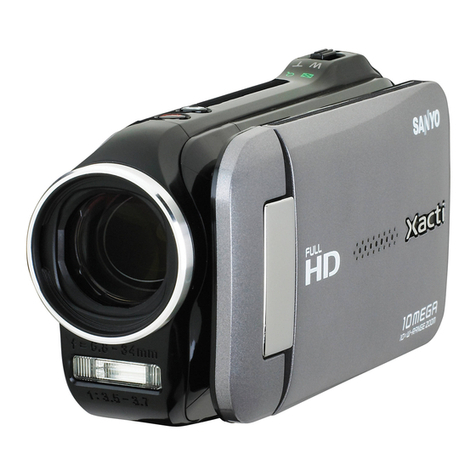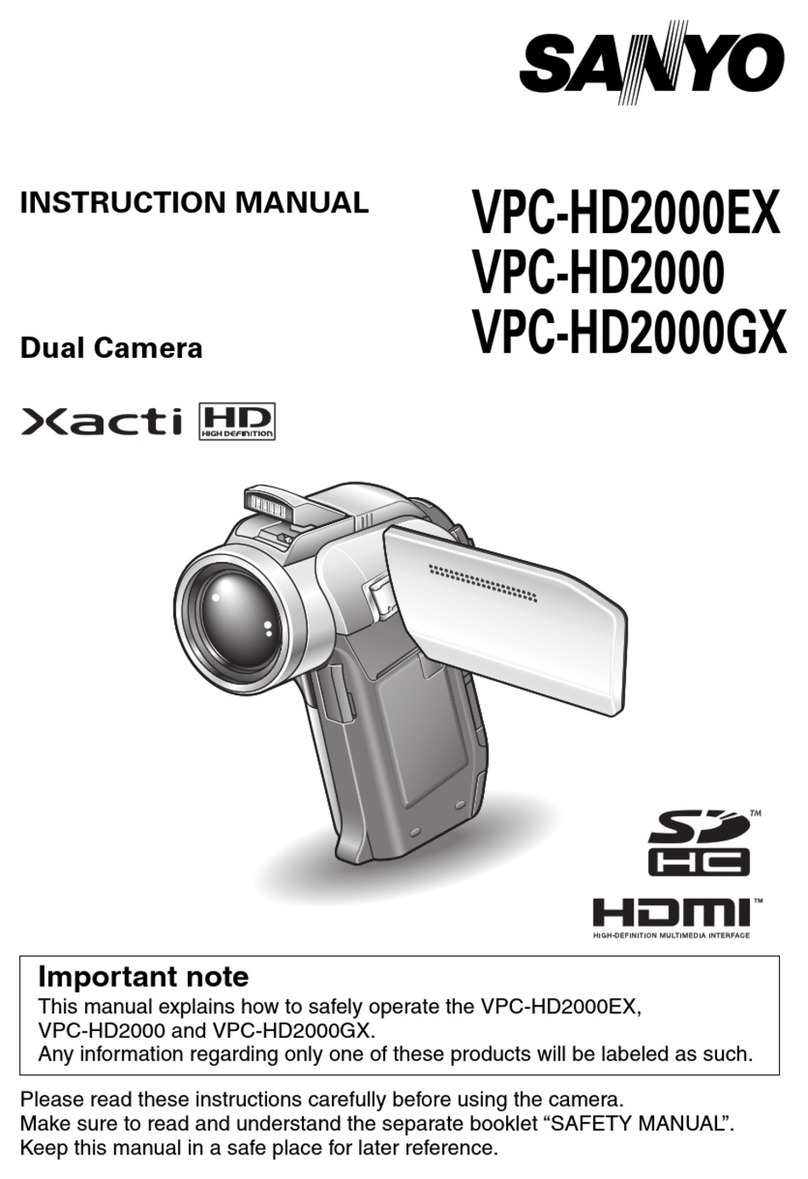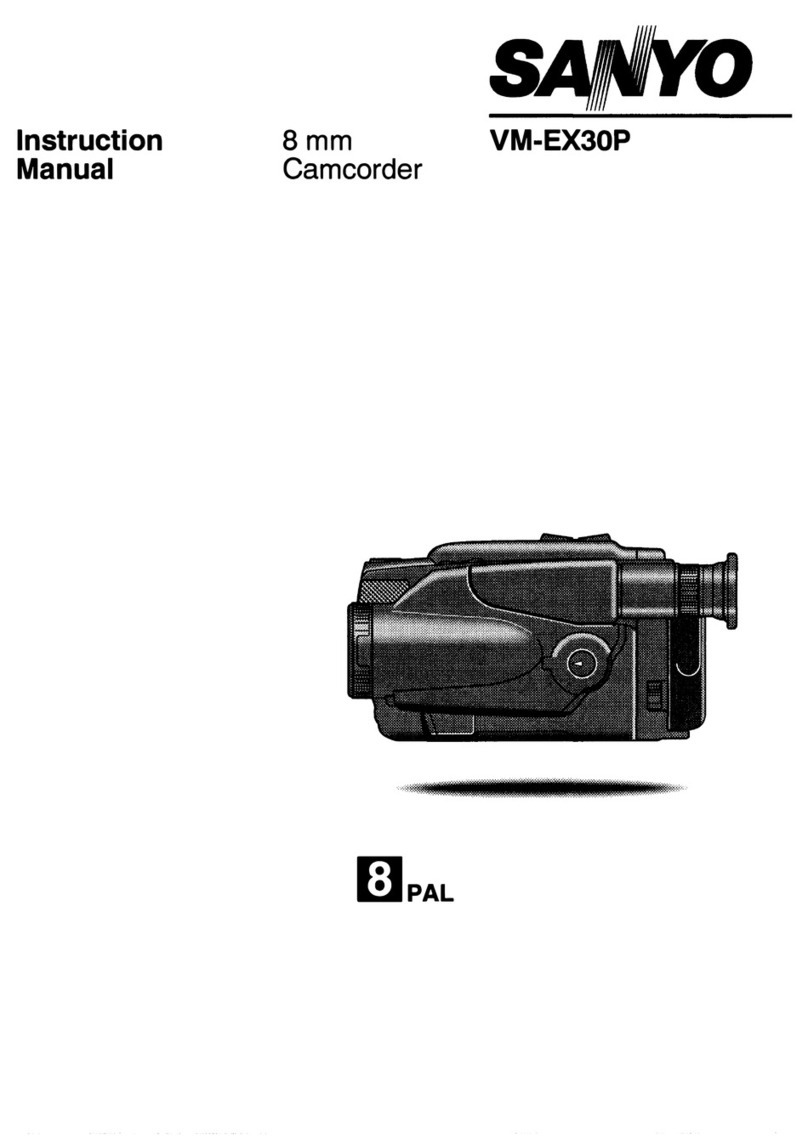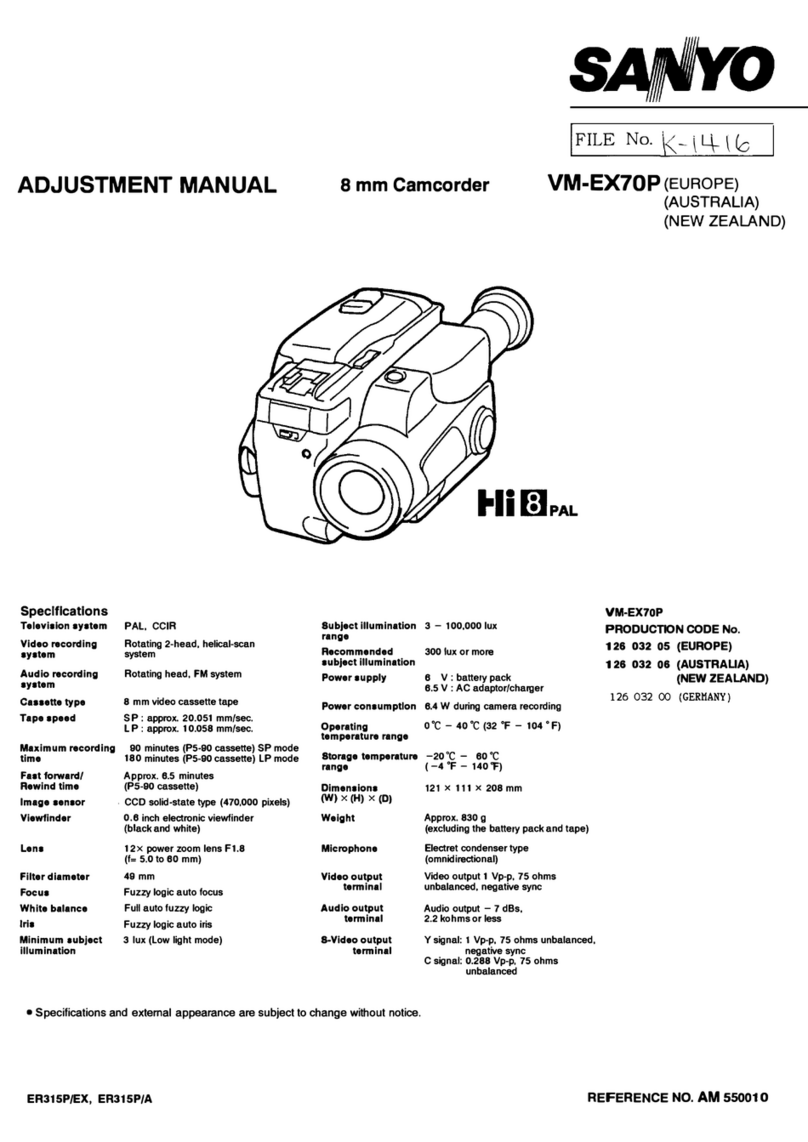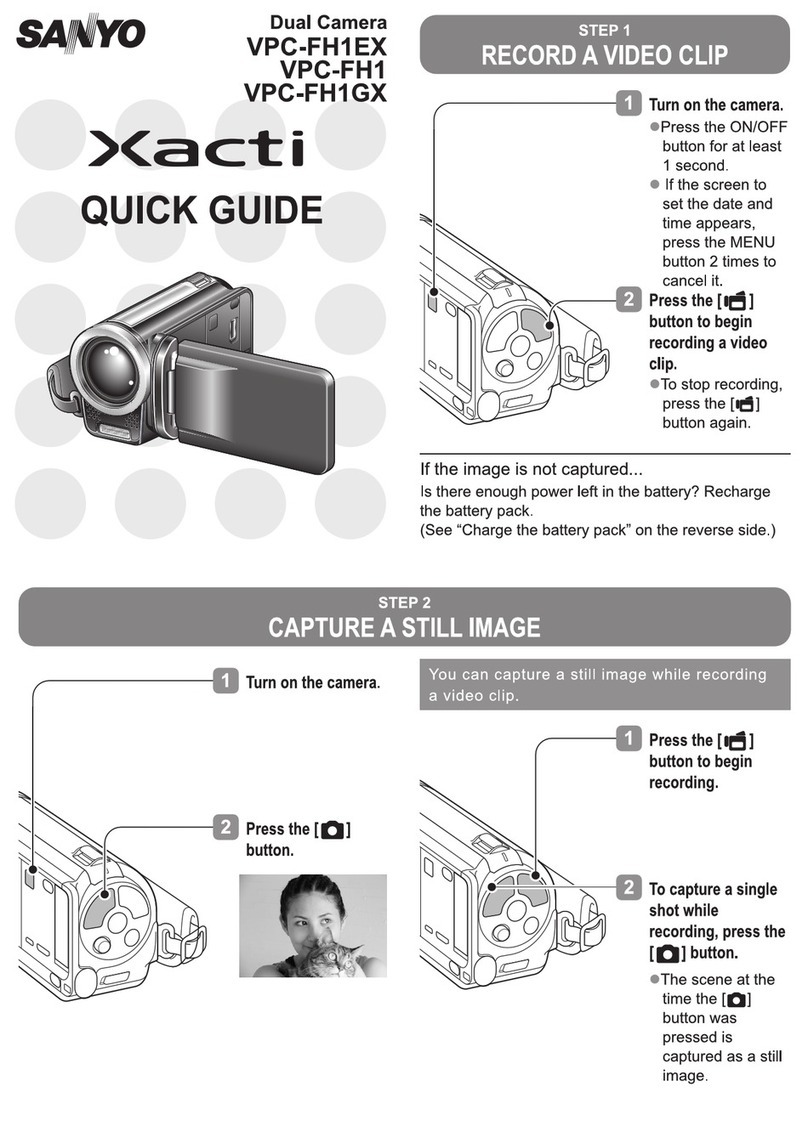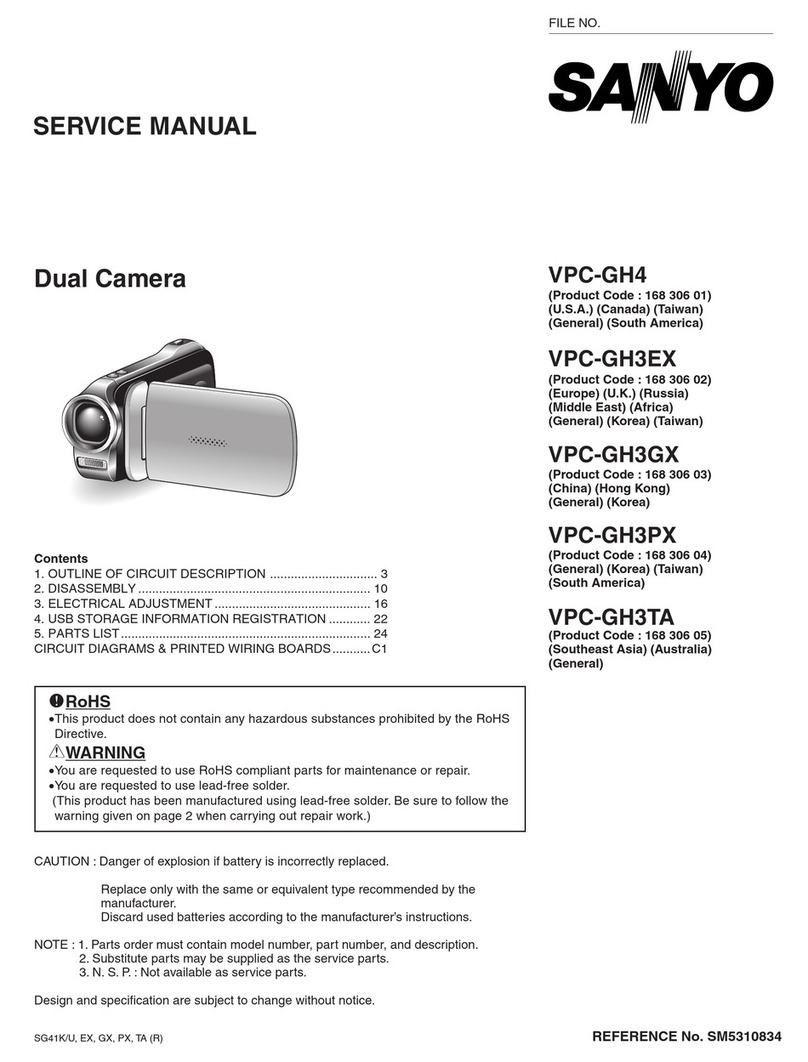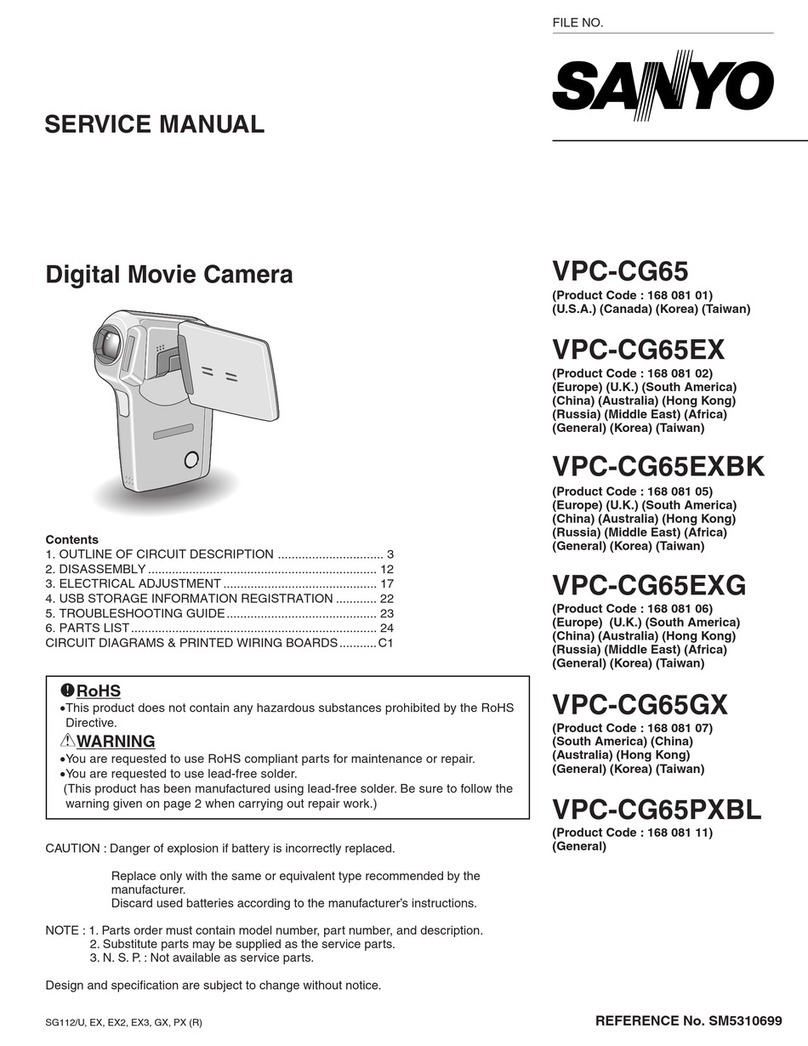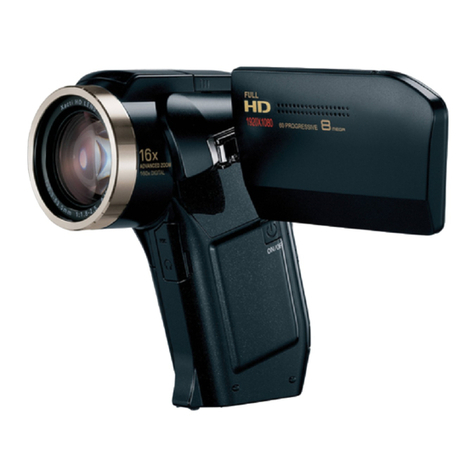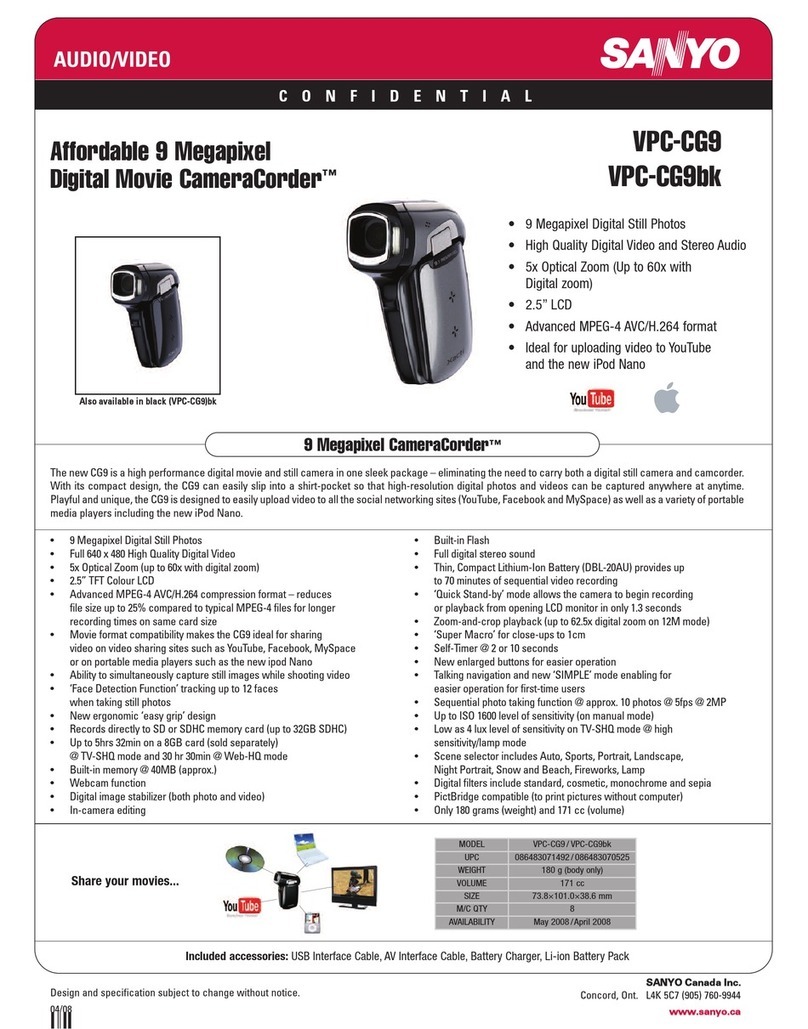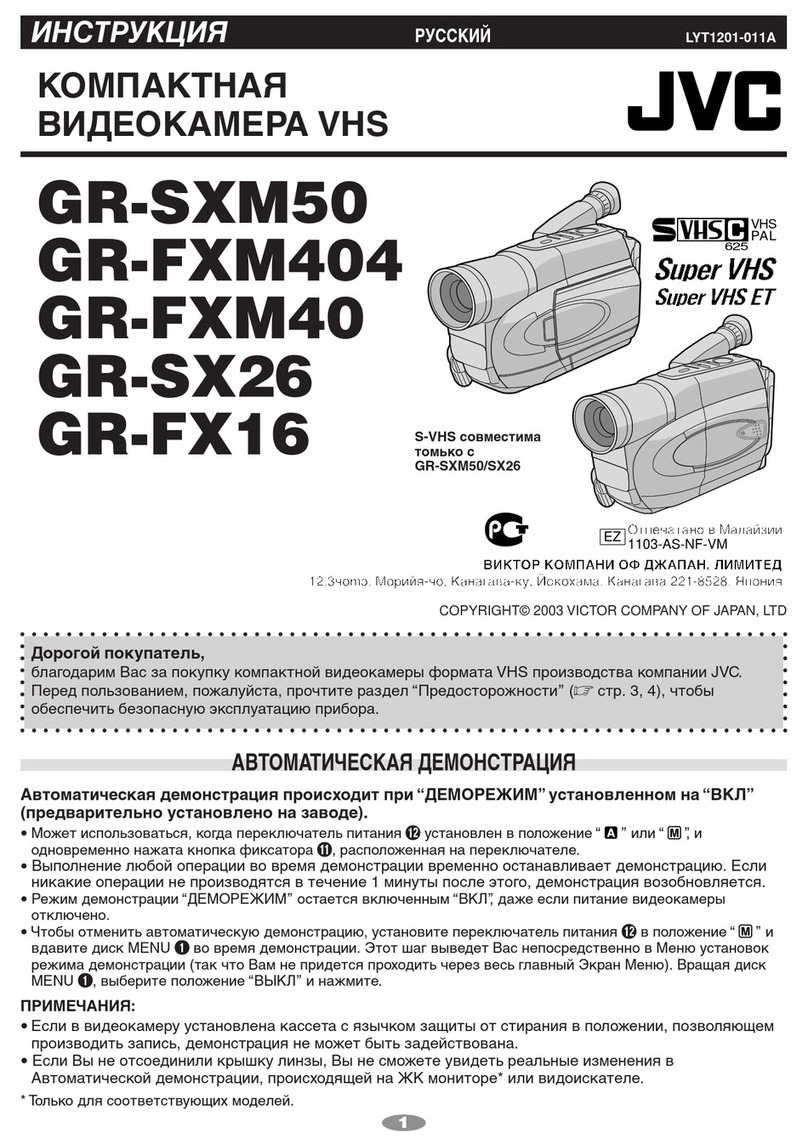1-8. ADJUSTING SPECIFICATION
[CP1 BOARD]
“OO’kL-J
1. Oscillation Frequency Adjustment
Meaauring Point Meaeuring Equipment Condition
TP902 Frequency counter CAMERA EE
TP901 (GND) I
Subject —
—
IADJ. Location IADJ. Value I
ICT901 128.375 i0.15 kHz I
Preparation:
●Set the CAMERA EE mode by setting the POWER/
CHARGE switch to “ON”.
●Connect the color monitor to the video output terminal.
(Condition for subsequent adjustments.)
Adjusting method:
1. Adjust with CT901 so that the oscillation frequency is
28.375 &0.15 kHz.
2. PLL Voltage Provisional Adjustment
Meaeuring Point Meaeuring Equipment Condition
TP903 Digital voltmeter CAMERA EE
TP901 (GND) Subiect
No designation
ADJ. Location ADJ. Value
ICT902 12.0- 3.OVDC I
Adjusting method:
1.Adjust with CT902 to 2.0 -3.0 VDC.
3. Hall Sensor Adjustment
Meaeuring Point Meaeuring Equipment Condition
Test pin array Oscilloscope CAMERA EE
J9001 @
[ADJ. SET] I
J9001 @Subject
[ADJ. END] Siemens star (illuminance: Oto 50 Iux)
J9001 @[GND1
ADJ. Location ADJ. Value
VR931 ,VR932
Preparation:
●Short pin @and pin @of J9001.
Adjusting method:
1.When the power supply is turned on, pin @and pin @of
J9001 will be HIGH for approximately 1second, and from
then on it will be Low and Hall sensor adjustment mode
will be enabled. (The iris will be closed, and VR932
adjustment mode will be enabled.)
2. If VR932 is turned to the left, pin @of J9001 will become
Low, and if it is turned to the right, the pin will become
HIGH. If it is turned further to the right, the pin will
alternate between LOW and HIGH. Turn VR932 to the
left and then to the right until pin @is set to HIGH. After a
short while, the iris will open and both surfaces will be
visible, and VR931 adjustment mode will be enable.
3. Next, adjust VR931 in the same way as VR932 to set pin
@to HIGH. After ashort while the iris will close, and then
it will open, and check the adjusting data, if the adjusting
data is no problem, pin @is set to HIGH and adjustment
will be complete.
4. Lens Adjustment
Measuring Point
J9001 @
[ADJ. END]
J9001 @[GND]
Measuring Equipment Condition
Oscilloscope ICAMERA EE
Subject
Siemens star (from lens surface:120 +1
cm, size: more than A3, illuminance: 100
to 200 Iux)
ADJ. Location ADJ. Value
VR931 ,VR932
Preparation:
●Short pin 0, pin @l and pin @of J9001.
Adjusting method:
1. Turn on the power.
2. The DC voltage of J9001 @will change from High (4 -5
V) to Low (below 1V), and the adjustment will be
completed. (About 30 seconds)
NOTES:
●After turning the power on, it automatically focuses in 4
zooming positions shown following.
@middle =@tele =@ middle ~@ wide
●Don’t vaibrate while you adjust.
●At any zooming positions, center of the siemens star chart
must be in ascreen.
5. Auto Iris Level Adjustment
Measuring Point IMeasuring Equipment Condition
Test pin array 10scilloscope ICAMERA EE I
J9001 @I
[IRIS DET] Subject
J9001 @[GND] Gray scale (standard picture frame)
ADJ. Location ADJ. Value
EVR CH3 I500 t20 mVp-p I
Preparation:
●Short pin @and pin @of J9001.
–lo–


